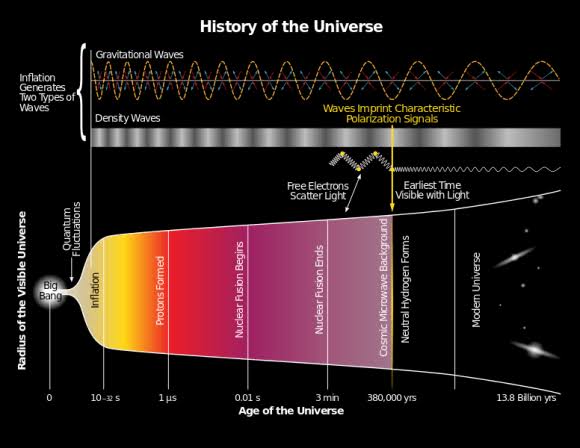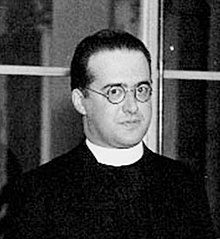The Big Bang Theory is a scientific explanation of the origin of the universe. It suggests that the universe began as a singularity—a point of infinite density and temperature—around 13.8 billion years ago. This theory is supported by a wide range of observational evidence and is the most widely accepted model among cosmologists.

Origins of the Big Bang Theory
The concept of the Big Bang was first proposed by Belgian priest and physicist Georges Lemaître in 1927. Lemaître suggested that the universe began from a “primeval atom” or “cosmic egg,” which expanded to create the cosmos as we know it. However, the term “Big Bang” was actually coined later by British astronomer Fred Hoyle during a 1949 BBC radio broadcast, although he used it somewhat derisively.
Evidence Supporting the Big Bang Theory
Several key pieces of evidence support the Big Bang Theory:
Cosmic Microwave Background Radiation (CMBR):In 1965, Arno Penzias and Robert Wilson discovered a faint microwave radiation that permeates the entire universe. This radiation is thought to be the afterglow of the Big Bang, providing a snapshot of the infant universe just 380,000 years after it began. The CMBR is one of the strongest pieces of evidence supporting the Big Bang Theory.
Hubble’s Law: In the 1920s, American astronomer Edwin Hubble discovered that galaxies are moving away from each other, suggesting that the universe is expanding. This observation supports the idea that the universe was once much smaller and has been expanding since its inception.
Abundance of Light Elements: The Big Bang Theory predicts the relative amounts of hydrogen, helium, and other light elements that should have been produced in the first few minutes of the universe’s existence. Observations of the actual amounts of these elements in the universe closely match these predictions, further supporting the theory.
Phases of the Big Bang
The Big Bang Theory describes the evolution of the universe through several distinct phases:
The Planck Epoch (0 to 10^-43 seconds): This is the earliest period of the universe, where all forces—gravity, electromagnetism, and nuclear forces—are thought to have been unified. The conditions during this time are not well understood due to the limitations of current physical theories.
The Grand Unification Epoch (10^-43 to 10^-36 seconds): During this phase, gravity separated from the other fundamental forces, while the remaining forces (electromagnetic, strong nuclear, and weak nuclear) were still unified.
The Inflationary Epoch (10^-36 to 10^-32 seconds): The universe underwent an exponential expansion, growing from subatomic scales to the size of a grapefruit almost instantaneously. This rapid expansion explains the large-scale uniformity of the universe.
The Quark Epoch (10^-12 to 10^-6 seconds): The universe cooled enough for quarks, the fundamental building blocks of matter, to form. Quarks combined to form protons and neutrons as the universe continued to cool.
The Photon Epoch (10 seconds to 380,000 years): The universe was dominated by radiation, and matter began to form atoms as it cooled further. Photons, or particles of light, decoupled from matter during this period, leading to the formation of the Cosmic Microwave Background Radiation.
The Formation of Galaxies and Stars (After 380,000 years): As the universe expanded and cooled, gravitational forces caused matter to coalesce into stars, galaxies, and eventually planets. This process continues to shape the universe today.

Future of the Universe
The Big Bang Theory also raises questions about the ultimate fate of the universe. One possibility is the “Big Freeze,” where the universe continues to expand and cool until all stars burn out, leading to a cold, dark, and lifeless cosmos. Another possibility is the “Big Crunch,” where the expansion of the universe eventually reverses, causing the universe to collapse back into a singularity. The discovery of dark energy, a mysterious force driving the accelerated expansion of the universe, adds complexity to these predictions.
In summary, the Big Bang Theory provides a comprehensive framework for understanding the origin and evolution of the universe. It is supported by extensive evidence and continues to be a central topic of research in cosmology.
Explore More

The author of big bang theory
Georges Lemaître
Georges Lemaître, a Belgian priest, physicist, and astronomer, is widely recognized as the father of the Big Bang Theory. Born on July 17, 1894, in Charleroi, Belgium, Lemaître was a man of diverse talents, seamlessly blending his religious vocation with a passion for science.
Lemaître initially pursued engineering at the Catholic University of Leuven but paused his studies to serve in the Belgian Army during World War I. After the war, he switched his focus to mathematics and physics, earning a doctorate in 1920. His academic journey then led him to study at prestigious institutions such as the University of Cambridge, Harvard University, and the Massachusetts Institute of Technology (MIT), where he deepened his understanding of astronomy and relativity.
In 1927, Lemaître published a groundbreaking paper proposing that the universe was expanding from an initial point, which he called the “primeval atom” or the “cosmic egg.” This idea was initially met with skepticism, but it laid the foundation for what would later be known as the Big Bang Theory. His work predated Edwin Hubble’s discovery of the expanding universe by two years, highlighting Lemaître’s pioneering role in modern cosmology.
Lemaître’s contributions to science were recognized in his lifetime; he was elected to the Pontifical Academy of Sciences in 1936 and served as its president from 1960 until his death in 1966. Despite his scientific achievements, Lemaître remained a humble and devout priest, believing that science and faith could coexist harmoniously.
Georges Lemaître passed away on June 20, 1966, but his legacy lives on, particularly through the Big Bang Theory, which remains a cornerstone of our understanding of the universe’s origins.

Get involved!
Comments